Alleviating the gloom for three more off-grid kampungs
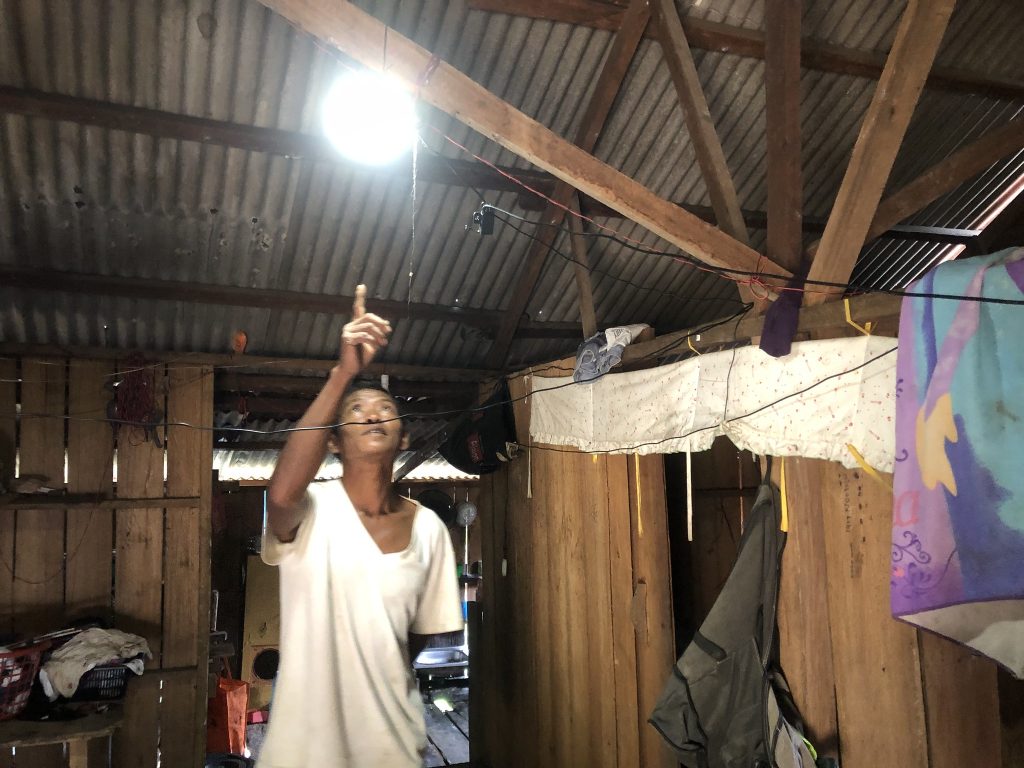
All-Lights Village
In solar energy, no single individual can be credited for its development. French scientist Edmond Becquerel identified solar thermal energy’s potential for electricity in 1839. Augustin Mouchet developed solar-powered generators in the 1860s, powering small bulbs. American inventor Charles Fritts created the first solid-state solar cell in 1883, a key figure in solar lighting technology with an initial efficiency of about 1%, compared to modern panels exceeding 30%.
Thanks to its evolution, Global Peace Foundation Malaysia successfully alleviated the gloom for three more off-grid kampungs — Kampung Sagong, Kampung Tenlan, and Kampung Semul — through our All-Lights Village initiative, benefiting a total of 493 families across Peninsular Malaysia. Since its inception in 2018, this initiative has been dedicated to addressing the issue of energy poverty affecting numerous indigenous communities.
With no access to electricity, villagers resort to burning dried palm kernels as a source of light
Our Technical Manager Arok Hanong, who hails from the Temuan tribe and has led our Technical Team for four consecutive years, imparted these inspiring words:
“Assisting the Orang Asli community, especially those in off-grid areas lacking basic amenities such as electricity, piped water, and sanitary latrines, has been a rewarding endeavor for me.”
“This work not only gives me a sense of fulfillment but also significantly eases the community’s hardships. Their difficulty accessing lighting at night often forces reliance on old oil lamps and costly generators, with petrol and diesel being prohibitively expensive for them. My involvement in this initiative has been deeply satisfying, and I aspire to extend my contributions to more villages.”
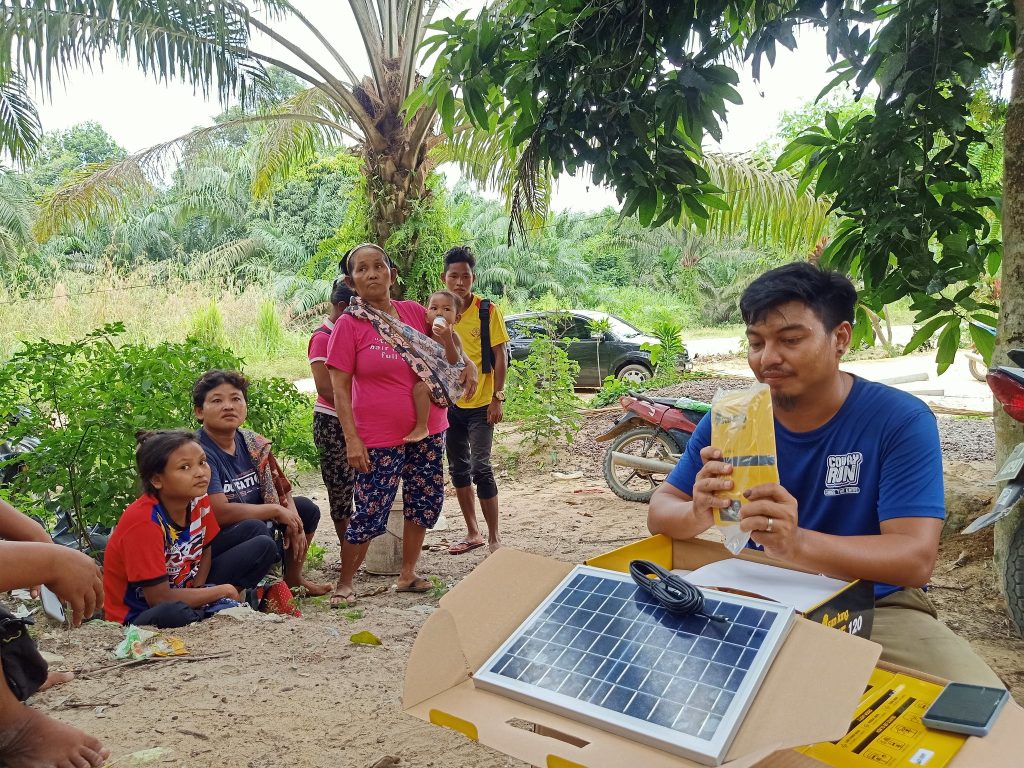
Our Technical Manager, Arok Hanong
Here is our conversation with Arok, revealing the behind-the-scenes efforts of the Technical Team when engaging with the three off-grid kampungs — Kampung Sagong, Kampung Tenlan, and Kampung Semul — in Kuala Lipis, Pahang:
Could you briefly describe the three kampungs ?
Collectively, the three kampungs comprise over 200 members of the Semai tribe. Their economic foundation relies primarily on rubber tapping and foraging activities. It has been several years since my previous visit to these Semai communities, yet they graciously remembered me and extended a warm welcome by addressing me by name upon my return. This gesture brings me considerable joy.
In the past, there were fewer households; now, numerous homes are scattered throughout the mountainous area. Remarkably, they have constructed fields for children to engage in sports such as bola jaring (netball) and sepak takraw (foot volleyball).
Certain parents choose to send their children to school daily, while others opt for the educational programs established by an NGO. The educators in these programs are also members of the kampung community. After completing their own education, they undergo specialized training and return to their Kampung to impart knowledge and teach the children.
Previously, there was no piped water system. Now, I observed that the Ministry of Health has installed one. Unfortunately, it is not efficient, as water does not reach all households. In particular, those residing at lower altitudes receive water access while those at higher elevations do not and must carry bottles and containers or kitchenware daily to a washing area approximately 300 meters away for their needs.
The water source is clean and originates directly from a waterfall; we provided them with a water filter to improve its quality for better healthcare. Regarding sanitation facilities, an NGO has constructed two latrines for the community’s use.
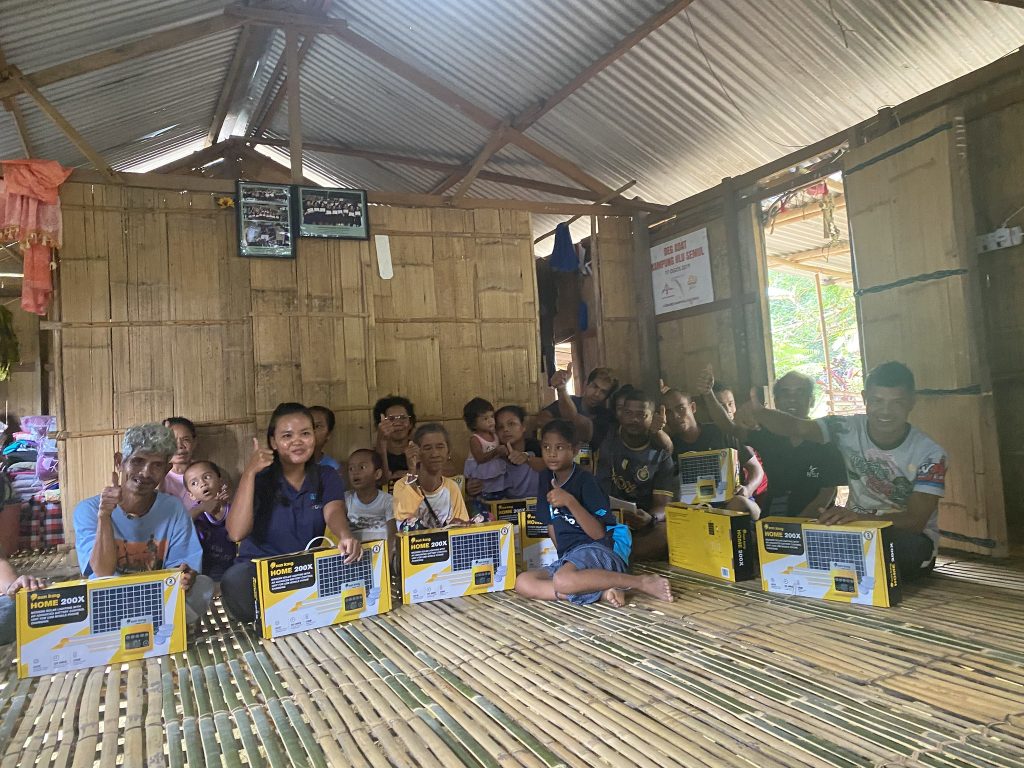
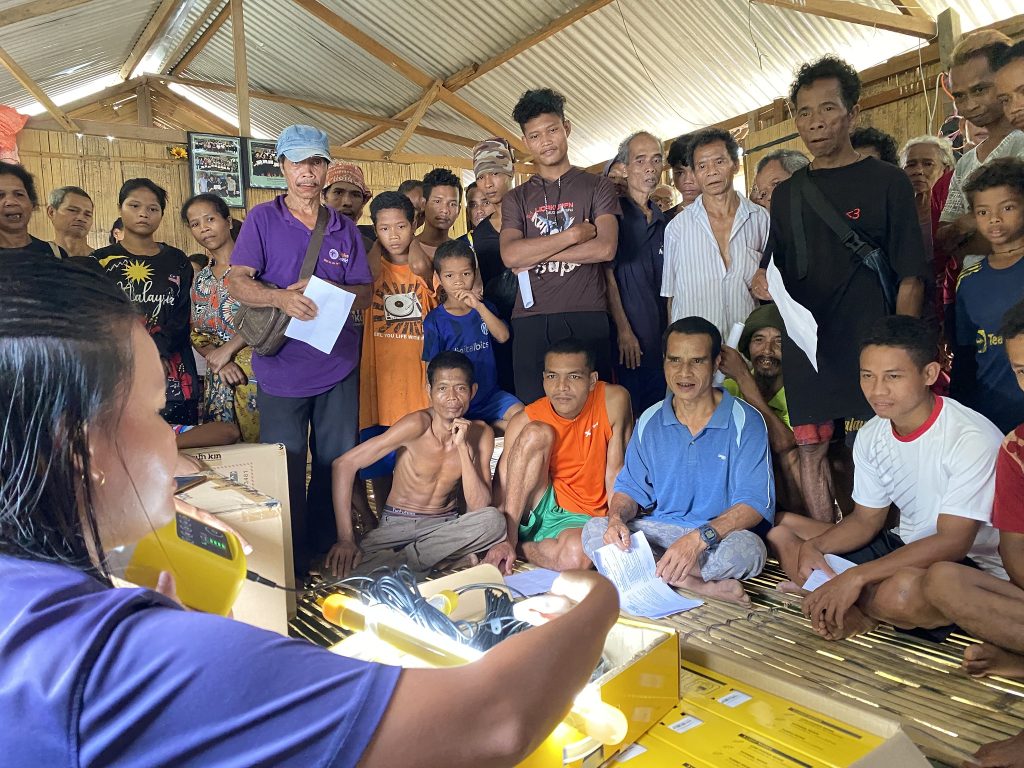
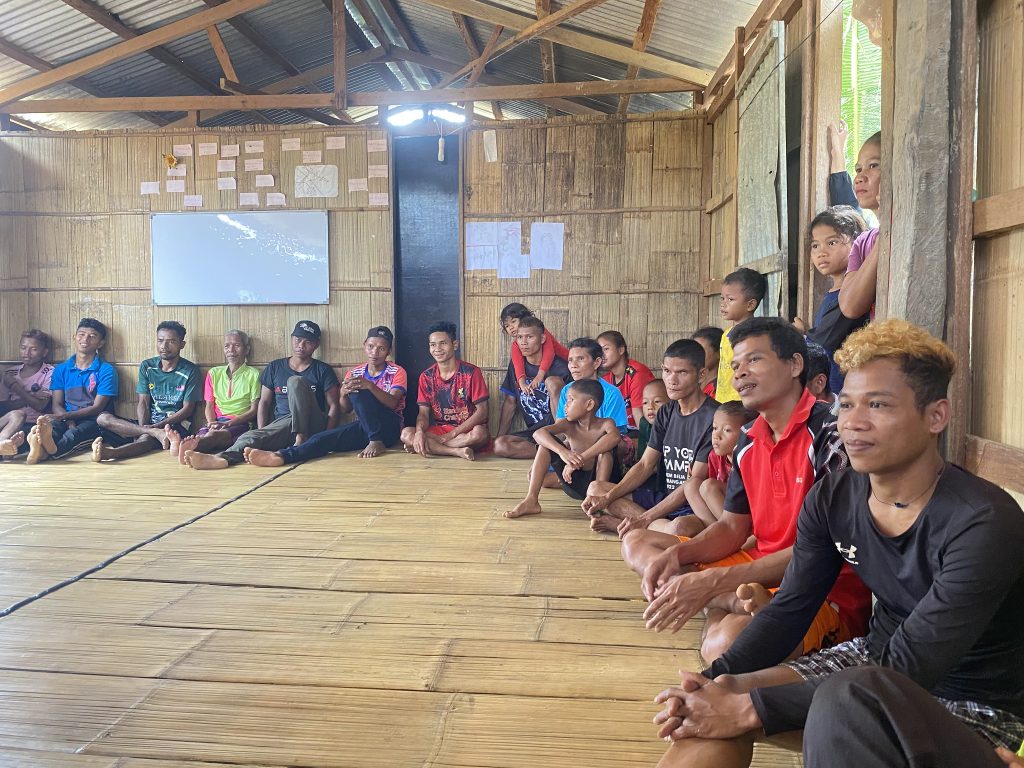
Villagers receive hands-on training on mounting their solar lights, guided by our officers to ensure proper installation and long-term use
How does energy poverty affect their livelihood?
In the absence of electricity, the community encountered considerable constraints in their nocturnal activities. Vital tasks, including cooking, cleaning, and laundry, were restricted to daylight hours.
The children were unable to pursue their studies after sunset, and the processing of akar (roots) for commercial purposes was similarly impeded. Consequently, all these activities had to be concluded before nightfall.
Furthermore, organizing communal gatherings such as bersewang (a traditional dance performed to appease spirits) — for medicinal purposes, funerals, and thanksgiving among three villages — proved challenging without sufficient illumination.
Besides energy poverty, what other current issues do the kampungs face?
- The issue of elephants encroaching upon and damaging farms in Kampung Sagong is a significant concern, particularly as no similar wildlife conflicts are reported in other kampungs. The community has employed various strategies to mitigate this issue, such as igniting large fires; however, these efforts have been unsuccessful.
Despite reporting the situation to PERHILITAN, which conducted an investigation and provided lighting solutions, the elephants have adapted and do not perceive these measures as threats. This persistent conflict arises from deforestation for timber purposes, which has disrupted the elephants’ natural habitat and depleted their food sources.
Additionally, the community has noted a shift in elephant behavior over time; whereas they previously avoided human settlements, they now frequently enter villages and cause destruction to farms.
- The road leading to the kampungs is in terrible condition. The pavement ends at a certain point, beyond which potholes create considerable hazards, especially after rain when the surface becomes very slippery. Also, the distance from the kampungs to the main road is about 10 kilometers. In its current state, it takes about two hours to travel this road by car.
- External vendors traveling to the villagers by motorcycle are currently offering solar lights to the community. Although the market price for these solar lights is approximately RM180, they are being sold to the community at a price of RM300.
Could you describe the procedure from engaging the community to installation?
- The first step involves contacting the Tok Batin to inform him of our intention to conduct a reconnaissance visit.
During this visit, we will gather data on their current living conditions, including water accessibility and systems, lighting availability, sanitary latrine status, road conditions, and the educational system for children. This information will be invaluable for any team planning a project in the area, as it provides insight into how we can offer effective assistance.
- Upholding the Free, Prior, and Informed Consent (FPIC) value, the second step is to meet with all community members to understand their needs. We will present potential projects for direct implementation in their village and seek feedback on whether they wish to adopt these initiatives.
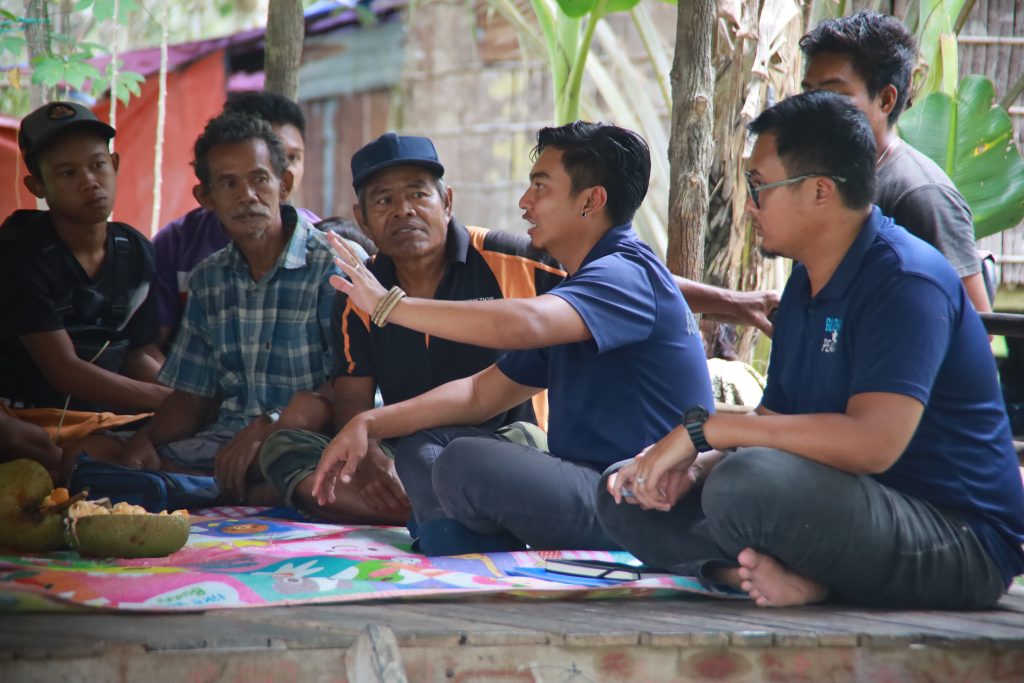
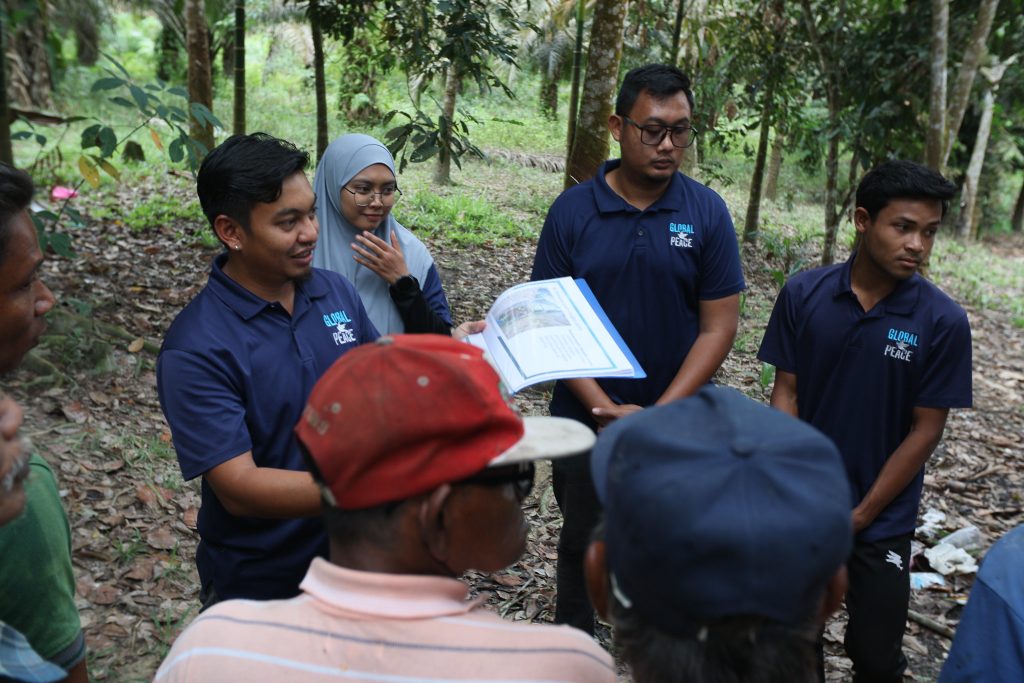
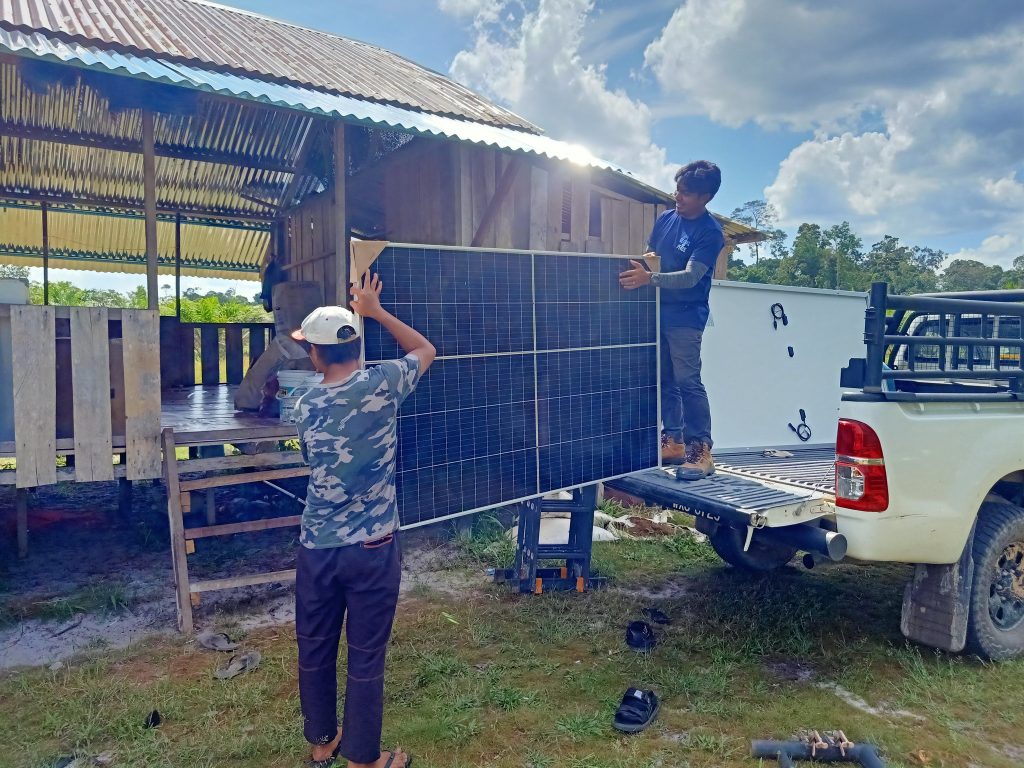
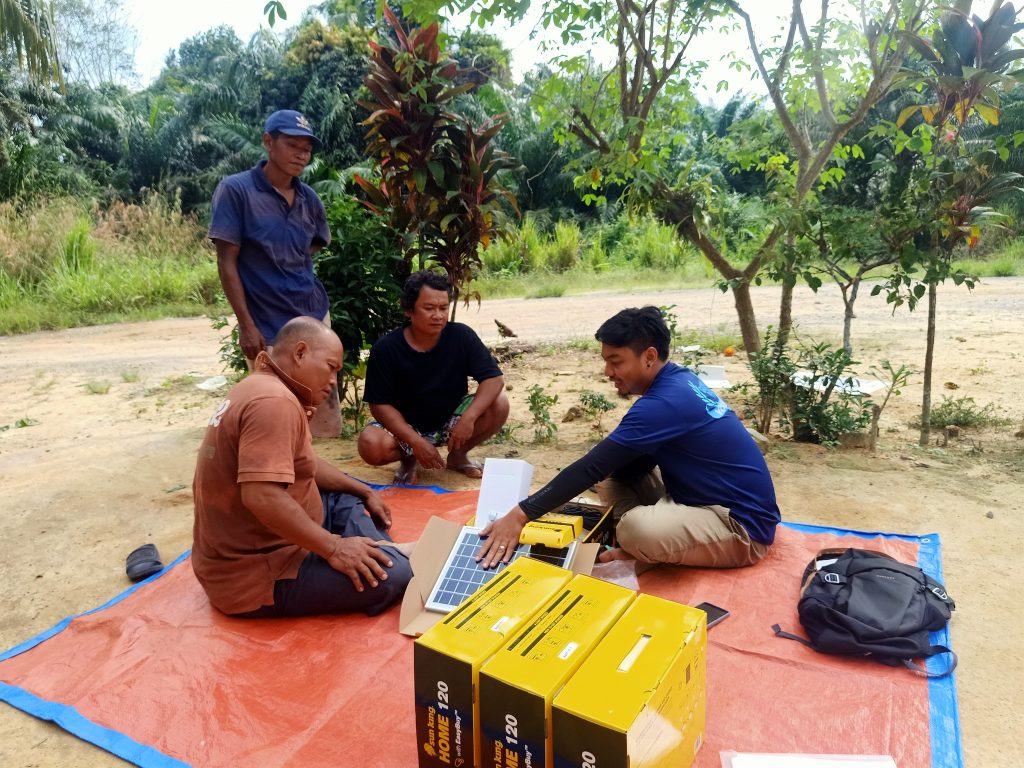
Arok has been deeply involved on the ground, conducting community assessments and training sessions
Furthermore, we will create a diagram featuring our initiatives (i.e., lights, water systems, and toilets) in separate columns on the floor. Community members can express their preferences by placing a stone in the column of their choice. The column receiving the most votes will prompt us to notify our team to seek sponsorship.
- In the third step of this process, we will read aloud all pertinent terms and conditions to ensure villagers are fully informed about maintaining facilities. Each household will receive a hard copy of the contract that requires consent through signatures.
- The fourth step involves the establishment of a maintenance fund for the community. This approach ensures that there is an available reserve should any lighting systems fail to function properly.
- The fifth step involves instructing individuals on how to install the lights during our forthcoming visit to the kampungs.
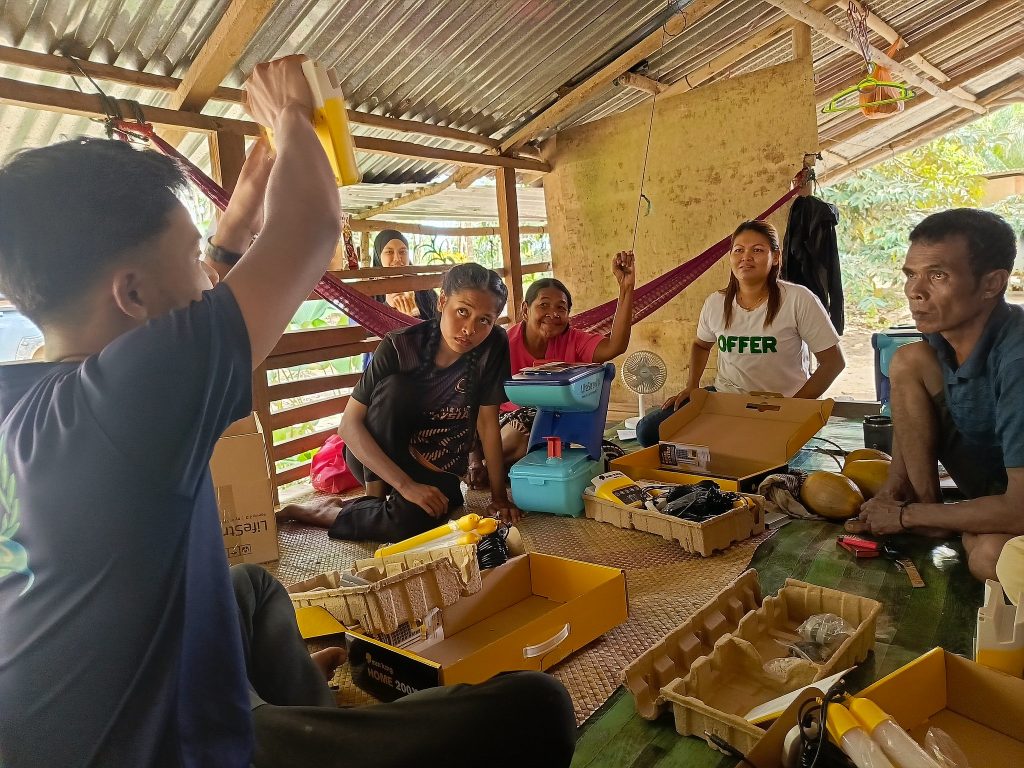
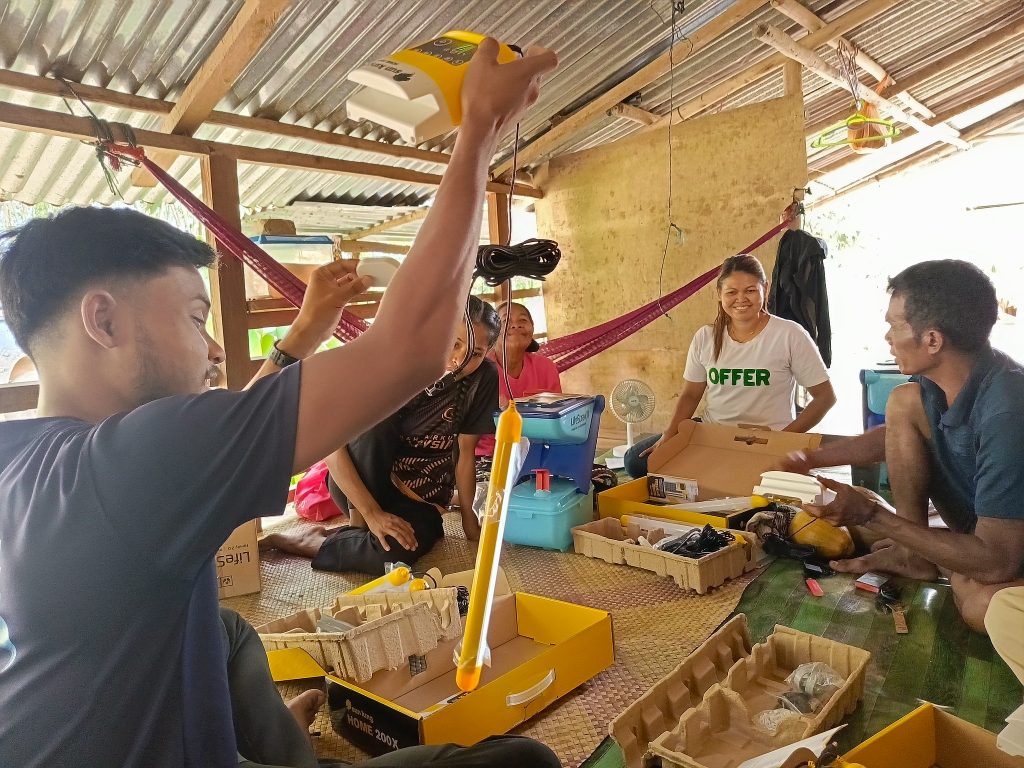
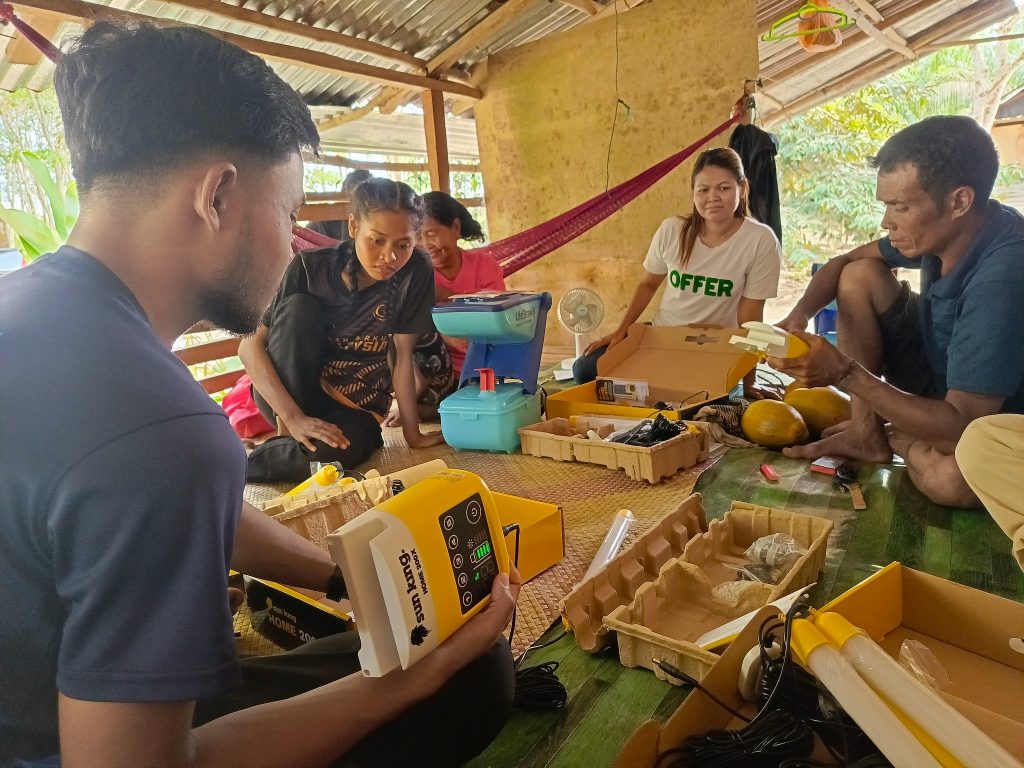
Our officer, Fazley, demonstrates the installation of a Solar Sunking Home system
- The sixth step is we will select a household and convene community members for a demonstration session. Next, we will identify a volunteer and guide him/her through the installation steps. This individual will serve as the mentor for installations across all households, ensuring that the process is completed comprehensively.
This method is efficient, allowing us to maximize our limited time in each kampung before moving on to the next, given that each kampung comprises numerous households. As many residents still cook using fire, which may result in smoke depositing dust on light surfaces, we also educate them on cleaning the light bulbs effectively.
- The seventh step involves posing questions to ensure that the Mentor has thoroughly comprehended the procedures.
- The eighth step entails returning to the kampungs after one or two months. During this period, we will inquire with the communities regarding the status of the solar light installations. Should any household encounter difficulties, we will visit them directly and provide assistance in resolving any issues they may face.
What are the challenges of this specific project? How did you overcome them?
The biggest challenge we faced for this project is that internet connectivity is only available at a certain altitude in the mountains. Within the three kampungs, there is no internet access at all, and the journey to the mountainous area is quite long. Our solution is to communicate with the Tok Batins at least one week before our visit to the kampungs by conveying our messages via WhatsApp.
What is the subsequent initiative planned following the completion of the lighting project?
Thanks to our generous sponsorship of Yayasan Hasanah, the Team is currently researching water sources. Soon, we will implement a gravity-fed water system for households at higher elevations to solve their water issues.
Annjil Chong (Writer)







